The Global War on Terror, program overruns, and increasing demand for new capabilities has placed an ever increasing strain on National Space Assets, from communications satellites to Earth and space observing systems. This strain has also created an opportunity. With the goal of increasing the number and capability of space based payloads at reduced costs compared to dedicated systems the concept of “Hosted Payloads” [1] has recently been attracting the attention of both Government and Industry as an example of how the government can do things differently and focus on capabilities, not systems.

Intelsat’s global fleet.
The Hosted Payload concept infers that a commercial satellite is used as a platform on which a secondary payload gains access to space by sharing the costs of the bus, the launch, and the insurance. This paper describes the Hosted Payload vision and strategy, and the specific requirements for access to space. It describes the commercial best practices and technical systems trade offs in size, weight and power (SWaP) for deploying a hosted payload onboard an Intelsat satellite.
Hosted Payloads—Their Historic Background + Capabilities
Intelsat has provided services to the US Government for more than four decades. Currently, Government’s approach to working with satellite operators does not take full advantage of the operators’ knowledge, expertise, capabilities & assets.
Novel and new approaches are available which could strengthen the government/industry relationships. These new approaches could provide flexible and cost effective customized capabilities for government customers. A Hosted Payload program could help define and accelerate the government’s objectives.
Hosted Payloads on Intelsat spacecraft have proven to be successful in the past. These include UHF, L- and C-band payloads on: Intelsat-22 (hosting the JP2008 PHASE 5 ADF Indian Ocean UHF Capacity), MARISAT, the predecessor to Navy FLTSATCOM program and INMARSAT, and the US Federal Aviation Administration L-band (GCCS) Payload which was launched on Intelsat’s Galaxy 15 spacecraft in 2005.
Intelsat’s global satellite fleet is shown in Figure 1 below, which creates interest in expanding our hosted offering into the world of remote sensing, Earth & space observation and scientific applications, MILSATCOM, which includes tactical protected communications. Intelsat defines Hosted Payloads simply as “mission specific customer payloads on commercial spacecraft.” Advantages of these payloads are that they are timely, economical and responsive. Their designs can be matched to a specific governmental need while supplementing purpose built government assets.
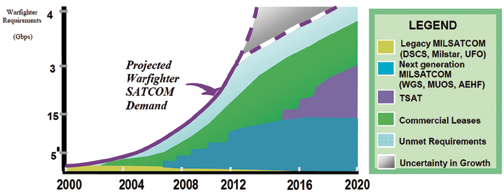
Figure 2. Warfighter Requirements Image is courtesy of DISA)
The sharing of a spacecraft platform and the “ride” into geostationary orbit potentially distributes both the risks and the capabilities of dedicated systems. Hosted Payloads position the satellite operator community to be a more effective provider of space capabilities to the government. This is achieved by augmenting government space acquisition with rapid, cost effective space access.
As an example of a demand to which Hosted Payloads provide possible solutions, the U.S. warfighter’s communications needs are presented in Figure 2 above, whereby commercial leases, unmet requirements and growth uncertainty outpace MILSATCOM systems. Similar situations exist in other application areas.
Legacy Of US Government Dedicated Payloads “Hosted” On Intelsat Spacecraft
A model for the Hosted Payload system is the UHF hosted payload on board Intelsat’s IS-22 spacecraft at 72 degrees East. The UHF-band payload is dedicated to the ADF mission and is hosted on a commercial satellite whose commercial mission is primarily C/Ku-band services. Intelsat General operates the ADF payload under a long term commercial agreement.
Another model for hosted payloads is the FAA Geostationary Communication and Control System (“GCCS”) L-band payload currently in orbit on the Intelsat Galaxy-15 satellite at 133 degrees West. The L-band payload is dedicated to the FAA mission and is hosted on a commercial satellite whose commercial mission is primarily C-band video service. Galaxy-15 was launched in September of 2005. Figure 3 below depicts the Galaxy-15 spacecraft with, and without,the GCCS payload.
Another model for the Hosted Payload system was the “IP Router in Space” (IRIS) payload, which was built under a DoD Joint Capability Technology Demonstration (“JCTD”). IRIS included a dedicated payload, including an IP Router, onboard the Intelsat IS-14 spacecraft, which was launched in November 2009 to 45 degrees West. IRIS demonstrated the operational capabilities of IP Routing in Space for warfighters in developing a concept of operations (CONOPS) for IP space based communications. The IRIS architecture and coverage areas that were in existence during the payloads’ operation are shown in Figure 4 on the following page.
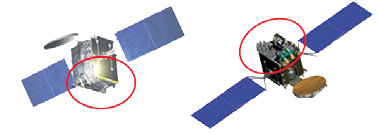
Figure 3. Galaxy-15 with, and without, GCCS.
Hosted Payloads: The Advantages
As the world’s largest commercial fixed satellite services operator, Intelsat typically procures two to three spacecraft per year. Each satellite is designed for an operational life of 15 years. Intelsat’s spacecraft have many commercial customers who depend upon the timely delivery of satellite capacity. Delaying procurement and/or launches could result in an erosion of the customer base and cause unacceptable contention on existing resources across the global fleet. Intelsat plans its fleet deployment based on a rigorous analysis of the business requirements associated with each current satellite orbital location. The ability to maintain a healthy satellite fleet and provision replacement satellites in a timely and cost efficient manner is the core of Intelsat’s 50 years of success as a satellite operator. As such, the ability of Intelsat to host a payload is driven by the following points:
Shared Operations: Hosted payloads take advantage of the Intelsat satellite operations capability. Hosted payloads share the satellite bus with the commercial payload; the satellite is flown and monitored by Intelsat throughout its life. The hosted payload customer leverages Intelsat’s substantial primary and back up space operations infrastructure to fly the host spacecraft. The hosted payload customer may select the option to control and manage its payload independently. In this option, Intelsat’s visibility can be limited, at the customer’s request, to the interface between the payload and the host spacecraft bus.
Access to Space: Hosted payloads take advantage of Intelsat’s orbital slot allocations. Over the last five decades, Intelsat has been granted the authority to operate at more than 60 geosynchronous orbital locations around the Earth. Matched with Intelsat’s fleet replacement program, the large number of allocations offers geographic coverage. Intelsat’s customers also leverage 50 years of regulatory influence.
Risk Reduction/Demonstration: Hosted payloads offer the government a powerful method to reduce or mitigate risks associated with program funding, launch delays, and operational issues. This can be accomplished by augmenting planned government systems and by providing a platform for the development of CONOPS prior to full operational capability of those systems.
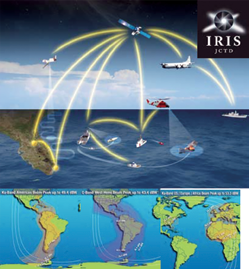
Figure 4. IRIS Architecture + Coverage.
Shared Development and Launch: Hosted Payloads take advantage of an existing commercial satellite’s design, development, and launch cycle. The hosted payload customer leverages Intelsat’s substantial technical infrastructure in the design/build/launch cycle, resulting in significant cost savings relative to typical governmental space acquisition programs.
Control Options: Hosted Payloads offer government customers various levels of payload command and control either through the Intelsat Telemetry and Command (T&C) ground facilities, or directly from a government facility possibly using an encrypted link.
Enhanced Security: Examples of standard commercial security include: NSA approved command encryption, RF security carriers; high power command transmissions; dedicated antenna on every satellite for commanding and telemetry monitoring; redundant antennas and systems within each ground facility; redundancy between ground sites to allow for a complete site outage; and perimeter and other physical security that includes camera surveillance, guards, and authorized person access only. In addition, Intelsat has backup operations centers (for satellite operations and customer communications services) in Metro Washington, DC, and Metro Los Angeles, California, offering geographic diversity. Telemetry and Telecommand sites are connected to the prime and backup Control Centers via redundant, diversely routed communication links, for accommodation of FIPS-140 traffic, and segregation of customer equipment and technical data.
Hosted Payloads: Technical Issues
System Trades
The system trades’ objective is to provide system capability into geosynchronous orbit. The selection of the commercial satellite mission’s orbital role and configuration may influence the delivery schedule to space, cost of integration and launch or salient performance parameters of the hosted payload.

Figures 5a, 5b + 5c: Notional Commercial Mission Configuration
Intelsat has significant flight history with numerous spacecraft bus manufacturers. However, detailed accommodation analysis is necessary to assess the impacts of incorporating payloads. In hosting specific customer payloads, system level trades are conducted in key areas. These include interactions with the commercial (primary) payload, field of views, cooling (thermal), accommodation, proximity of electronics and concept of operations.
Additionally, the physical dimensions, (SWaP), thermal dissipations (conductive and radiative) and DC power draw are considered. The commercial payload’s configuration and mission are also evaluated to assess impact to the hosted sensor payloads. The commercial mission can then be merged with the hosted payload to address mission interactions, stability, operations, maneuver life, and opportunity costs. The intention is to maximize both the commercial mission to allow for continuity of service whilst enabling the hosted payload mission.
Commercial spacecraft bus employs modular designs, thereby allowing the spacecraft manufacturers to support a varied set of mission requirements. These bus have been designed with the best commercial practices and procedures utilized in their fabrication which allows for rapid and repeatable architectures. As missions change, the bus design does not require redesign or requalification.
As the spacecraft operator, Intelsat reviews the requirements needed to host the payload. This review is done with the selected spacecraft bus supplier, as Intelsat believes that the spacecraft bus supplier has the appropriate tools and skill sets necessary to determine the feasibility of accommodation. Part of Intelsat’s trade space is to maximize the commercial mission while enabling the hosted payload mission.
Key areas the commercial bus supplies must address are utilization of side wall and Earth view (AKA—Earth deck) mountings to accommodate antennas and the sensor payload; payload component mounting real estate which employs either conduction or radiative cooling techniques for payload thermal dissipations; electrical power; jitter or pointing accuracy.
Accommodation
Hosted payloads needing Earth views warrant accommodation onto the Earth deck. These areas have traditionally been used for communication payload antennas. Unlike large East / West deployed commercial antennas, Earth facing payloads need to take advantage of the mounting area on the Earth deck. This is driven by various trades, namely heat dissipation, continuous Earth views and a stable environment. This stable environment is compared to the East / West mounting areas.

Figures 6a, 6b, 6c + 6d: Notional Hosted Sensor Payloads.
In integrating the payload, the spacecraft supplier must also assess the proximity to the payload’s electronic boxes. This allows for easier access during integration onto the spacecraft and a mounting area that allows for thermal dissipation.
To ease integration late in the spacecraft’s build, the payload may be integrated onto extension panels. This allows for delivery flexibility (partial or sequenced) of the payloads. Furthermore, the use of simulators can further extend the needed time for integration.
This may not be the preferred approach but with careful planning, the programmatic risk can be managed. Figures 5a, 5b and 5c, next column, top, provide a sample of notional commercial configurations of the Earth deck onto which a hosted payload can be accommodated. In the configurations shown, extension panels can be seen rising up from the Earth deck along the north / south panels.
Part of the accommodation trade addresses the payload data stream requirements. A critical piece of the data stream requirements is the need to encrypt the data collected onboard prior to transmission. Encryption capability will either be delivered as part of the hosted payload or as part of the T&C subsystem. To minimize SWaP and hardware cost associated with the payload’s data streams, connectivity via the commercial transponders is suggested. This alleviates the need to obtain additional regulatory filings for frequencies not currently allocated to the host spacecraft. Additionally, it minimizes the resources needed by the hosted payload thus, reducing the overall cost to orbit.
Using the commercial transponders allows for various data rates that can be transmitted to or from existing customer sites or through Intelsat’s ground network for distribution. Intelsat currently operates an extensive global data distribution network which can support the required bandwidth to gather and distribute data globally. Figures 6a, 6b, 6c, and 6d on the following page illustrate notional payloads interfaced onto Earth decks with commercial mission antennas deployed from the spacecraft’s east and west side walls.
Telemetry + Command
The hosted payload may require connection via a payload interface unit for appropriate power conversions, telemetry and command interfaces. Commands are sent to the payload using the onboard command system. Telemetry is received via the onboard telemetry system. The T&C subsystem that controls the payload is the same subsystem that controls the commercial payload.
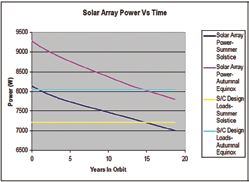
Figure 7. Typical Available Solar Array Power Vs. Time + Season.
The Satellite Control Center (SCC) monitors the health and status of the commercial mission and the hosted payload to ensure safe and continual operations over their respective mission life. Under this umbrella, there are numerous structures for hosting. These range from ‘pure’ hosted payloads where the entire payload is turned over to the customer for remote commanding from a customer facility (with Intelsat focusing on ‘flying’ the spacecraft), to options for Intelsat to provide ongoing command and control of the payload for the customer. In the latter case, commanding may be done either by establishing a contact protocol with Intelsat’s Satellite Operations Center (SOC), Intelsat General’s government dedicated Secure Operations Center (ISOC), or through an established terrestrial Virtual Private Network (VPN) using the SOC’s infrastructure. This latter example is the agreed methodology selected that supports the ADF hosted UHF payload onboard IS-22.
Electrical Power Subsystem
Hosted payloads can be accommodated to operate at either beginning of life (BOL) or throughout the spacecraft’s end of life (EOL). Operation at BOL is when the spacecraft produces more power than required to meet the commercial payloads needs (aka power margin). The payload operating within the spacecraft’s design limits during BOL ensures stability and predictable temperature ranges while retaining equipment reliability levels.
The commercial mission needs can alter with time, due to customer changes. This may drive coverage area repointing and link performance parameters associated with the graceful degradation of the solar arrays. As the spacecraft begins its transition toward EOL, operation of the hosted payload beyond BOL may require refinements in managing the power use of the commercial mission. Operation during this time period ultimately leads to a cross over point where excess power margin decreases thus ending the BOL operation.
However, by incorporating the hosted payload into the baseline design of the electrical power subsystem can ensure operation until EOL of the spacecraft. This is accomplished by exercising the modularity of the electrical power subsystem during the spacecraft design thereby, upsizing the subsystem to insure power and thermal margin throughout the spacecraft’s operational life. Figure 7 above provides typical available solar array power curves to support both a hosted payload and commercial mission over time. The BOL operational duration is prior to the crossover point. Furthermore, the required commercial mission power demands are also shown. The area between these curves identifies the available BOL power margin and its availability duration (typically years).
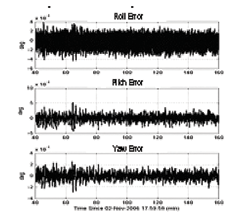
Figure 8. On Orbit Data For Pointing Stability. Figure is courtesy Orbital Science Corporation.
Thermal Considerations
In concert with the power needed for the hosted payload, the thermal accommodations are equally important. A communications spacecraft can generate upwards of 15kW of DC power and will need to dissipate approximately half. The integration of a hosted payload must address the effects of this heat. Conductive and radiate heat paths can influence the payload’s environment. In order to maintain operational stability, predictable temperature ranges, and equipment reliability levels commercial spacecraft are designed to dissipate heat in an efficient and effective manner.
The spacecraft’s Earth deck is thermally coupled to the north and south payload panels. This is done with the use of embedded heat pipe networks, face sheet doublers or local surface mount heat pipes that connect to the payload and aid in its heat transfer. Heat dissipation panels are covered on the outside with optical solar reflectors (OSRs), have built in heat pipe networks which are sandwiched within aluminum honeycomb and aluminum face sheets to for heat dissipation.
The thermal coupling of the north and south panels to the Earth deck can produce additional heat sources that will influence the hosted payload’s environment. If it is necessary to isolate the payload from external sources, the sensor payload will need to provide its own thermal control system. The use of cryo coolers, local radiators coated with OSRs or embedded heat pipe networks can aid in thermal dissipation. The effects are a more stable payload platform with isolation from the bus and its local environments. A mission specific thermal analysis assesses the thermal margin within which the payload will operate. The results of this analysis can influence the payload’s thermal / mechanical design.
Pointing Accuracy, Control, and Jitter
A concern with hosting a sensor payload is the stability of the spacecraft. Stability mitigations can include better attitude knowledge and control, compensation for excessive motion either on the spacecraft (via an Earth pointing optical bench) or within the sensor (i.e., dynamic image stabilization). As such, the traditional error budgets used to calculate the commercial payload beam pointing accuracy is inadequate. This inadequacy is dominated by the relatively short term (duration) that a sensor captures its information as compared to pointing of a commercial antenna using a wide footprint or coverage area.
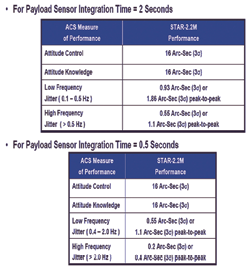
Figure 9. Predicted Pointing Stability. Figure courtesy of Orbital Science Corporation.
The typical pointing accuracy of a commercial communications spacecraft is ±0.1 degrees (333 arc seconds). This pointing accuracy is a combination of long term, short term, seasonal and diurnal errors. For a 15 year mission, each has its respective place. As remote payloads are more sensitive to the short term and diurnal effects, long term and season influences can be treated as separate issues. As mentioned above, it is necessary to mitigate the short duration effects. Better attitude knowledge can be provided to the sensor from the commercial bus via constant gyro updates or directly by way of star trackers. Star trackers can either be integral to the sensor payload or part of the commercial bus attitude control subsystem. The stabilization data can then be used to mitigate the jitter imposed upon the sensor. Short term effects (or jitter) results from bus subsystems (e.g., Solar array flexure (due to solar winds and thermal transients) and the attitude control system (sensor noise, and momentum wheel vibration). Sensor payloads can require up to two orders of magnitude more stability. Taking these effects into account, commercial geostationary spacecraft can be stable especially when an Earth pointing optical bench or sensor dynamic image stabilization is employed.
On orbit stability has been measured on a limited number of commercial spacecraft. The use of star trackers has provided the data for an assessment of the bus’ stability. One such supplier’s on orbit measured results are detailed in Figure 8 and Figure 9, to the left and above.
Size, Weight and Power
SWaP of a hosted payload, the associated thermal resources and integration scope require evaluation and study. The use of heritage hardware and /or flight proven technology for the hosted payload design minimizes both technical and programmatic risk. The strategy in identifying candidate orbital roles include: determining replacement needs; growth; timing; spacecraft sizing; consolidation of roles (by collapsing multiple orbital roles from 2 to 1); offload traffic (as part of the consolidation process); and identify in orbit sparing. These assessments determine the “size” of each candidate spacecraft. For each orbital role the spacecraft size is coarsely defined as small, medium or large. Each spacecraft size is relative to the commercial payload’s DC power requirements. A small spacecraft has a payload DC power of less than or equal to 5kW; a medium spacecraft has a payload DC power between 5kW and 9kW; and a large spacecraft has a payload DC power greater than or equal to 9kW.
Each candidate orbital location is available for a hosted payload. As the commercial mission solidifies along with hosted payload opportunities, the spacecraft size can better be assessed. As stated above, role consolidations, role replacements and even potential anomalies (unforeseen operational or mission failures), will greatly influence the spacecraft size assumptions.
Timeline For Integration
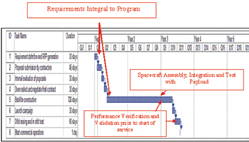
Figure 10. Indicative Timeline.
Candidate orbital locations and their associated order dates and launch dates are based upon the commercial payload replacement needed to ensure continued operations. However, as opportunities present themselves, dates are subject to change. As an example, in support of interest for a hosted payload within a specific orbital arc, replacement spacecraft can be considered for acceleration.
Acceleration could advance the order date by as many as two years. In contrast, a delay in spacecraft order dates and launch dates are not necessarily considered. The need for the spacecraft is driven by the orbital maneuver life of the satellite in orbit and the continued commercial operations from the respective orbital locations.
The identification of candidate orbital location(s) needs to be decided early. Upon selection, regulatory coordination may be necessary along with an assessment of the spacecraft‘s size. This takes into account the size envisioned for the commercial mission and any “upsizing” that may be required to accommodate the hosted payload.
If upsizing is not required or wanted, the hosted payload may need to be sized to fit within the available bus capability (BOL). Once accommodated, the Hosted Payload is included in the spacecraft requirements documentation.
This documentation is what industry will use to propose a solution for the spacecraft configuration. Through this process, the hosted payload becomes integral to the program. Figure 10 below depicts an indicative schedule whereby the hosted payload is integrated into program events. As such, all interfaces are established and spacecraft assembly, integration and test are developed with the hosted payload inclusive. Pre Launch, Launch and In Orbit testing are carried out on the payload for performance verification and validation prior to start of service.
Hosted Payload: Program Structure
Intelsat General acts as the prime contractor for all procurement and leases tied to the described architecture. Intelsat General contracts for the manufacture and integration of hosted payload (either as GFE, CFE, or directed source) and an affiliate of Intelsat General, Intelsat Ltd, would procure the “host” spacecraft on which the payload will operate. The chosen spacecraft manufacturer is then responsible for the overall schedule, to include the delivery, integration and test of the payload.
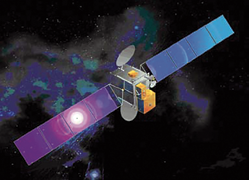
Figure 11. Notional Deployed Satellite with sensor payload (installed on Earth Deck).
As part of Intelsat’s analysis on hosting a payload, IGC independently verifies that the payload supplier can deliver their system for integration to meet the spacecraft deployment required by Intelsat’s commercial mission. Additionally, Intelsat Ltd. procures the required integration and launch services to place the spacecraft into geosynchronous orbit.
The success of payload hosting is supported by Intelsat’s policy of in plant monitoring of development, assembly, integration and test of the spacecraft it procures. The approach began during the latter part of the Intelsat III Program (circa 1970’s) and has continued since then for the construction of 90+ spacecraft. In the process, Intelsat has developed a close and mutually respectful relationship with each of the major spacecraft manufacturers.
Though its efforts and active on site program participation, Intelsat has realized a highly successful in orbit record. Intelsat has unparalleled experience and expertise in all areas of satellite engineering and operations, an established ground network infrastructure, launch vehicle program management service, launch and early orbit phase (LEOP) management, in orbit testing (IOT), satellite communications quality of service (QoS) monitoring, satellite operations services, and satellite insurance support services.
As part of Intelsat’s standard management plan, all of the company’s spacecraft manufacturing suppliers accept resident Intelsat Program Managers (IPMs) with each satellite build. These IPMs are highly qualified engineers with an average of more than 12 years of experience in satellite design, acquisition, and program management. Due to the close physical proximity of our staff, we have developed strong relationships with our suppliers in every functional area.
Additionally, we have tasked our spacecraft and payload supplier teams with providing a detailed look at how they would integrate a hosted payload solution using commercial best practices while preserving schedule and controlling costs.
Intelsat’s commercial spacecraft supplier base offers significant economies and speed of deployment, compared to traditional governmental programs. IGC weighs the experience and technical offerings of potential suppliers for the commercial payload, spacecraft bus, and hosted payload integration capabilities. As such, IGC can establish a team of industry experts to manufacture, integrate, deploy and operate a hosted payload in orbit. The lessons learned by IGC and our suppliers over dozens of satellite programs has been incorporated into the standard practice and procedures, thereby providing technical and schedule credibility. The interface definitions, roles and responsibilities, and quality assurance practices are well defined between Intelsat and its suppliers.
Hosted Payloads: Financial Considerations
The business case for a commercial mission spacecraft to host a customer specific payload mission needs to be carefully analyzed. Hosted payload pricing is complex and includes many factors: the hosted payload itself, this can be government furnished and/or funded; integration costs of the payload onto the host spacecraft; shared use of the spacecraft’s common systems and the launch vehicle; capitalized program costs during the spacecraft’s construction period; TT&C and ground infrastructure, as required by the hosted payload customer; financing costs; insurance, launch plus one year of in orbit operations; on ground operations over the service life of the payload; custom options requested by the hosted payload customer; and a reasonable return on the investment commensurate with risk.
Other factors that influence the business assessment of the hosted payload opportunity include:
Volume and term of the customer’s commitment; furnished or funded payload; up front deposits paid during the spacecraft construction period versus payments over the service term; market factors and impacts on orbital maneuver life or other performances.
The value of hosted payloads is seen with key economic drivers when compared to a dedicated spacecraft supplying the same payload capability. They include: 1) The sharing of costs with the spacecraft common systems and launch vehicle. 2) Typical payload/spacecraft construction periods of 36 months yielding 2+ years of early start of service. 3) Provision of commercial best practices utilizing professional project management practices. 4) Flexible payment plans to match customers’ funding profile (e.g., upfront, all lease, upfront followed by lease).
Within the commercial geosynchronous communication satellite industry, there already exists a fundamental unit of measure of value, the single (36MHz) transponder. Any commercial venture which proposes to use real estate on a communication satellite must at the very least, use this metric in evaluating hosted payload opportunities. Figure 12 depicts a notional trade between commercial apertures / transponders whereby a commercial payload is replaced by a hosted payload. Any proposed opportunity which does not at least maintain or exceed ROI parameters is essentially a non starter from a conventional investment / business case standpoint.
For additional information regarding IGC, please visit http://www.intelsatgeneral.com
About Intelsat General Corporation
Intelsat General Corporation (IGC) is a wholly owned subsidiary of Intelsat Corporation (Intelsat), the world’s largest commercial Fixed Satellite Services (FSS) operator. Currently, Intelsat owns and operates more than 50 geosynchronous spacecraft; additionally, Intelsat operates another 12 satellites for companies such as DIRECTV and EchoStar.
Intelsat is the largest provider of commercial satellite services to the U.S. Government and its allies. As a testament to Intelsat’s dedication to, and focus on, the Government market, Intelsat General Corp. (IGC) was created in March of 2003. The mission of the company is to provide a range of sustainable, cost effective, secure satellite based solutions to Governments (US and Allied), NATO and other Military and Commercial entities worldwide.
IGC, a U.S. corporation, includes a dedicated team of satellite professionals, experienced in every facet of the satellite industry, including satellite design, payload accommodation, network design, transmission engineering, program management, cost benefit analysis, and Government contracting.
Acknowledgements
The author would like to acknowledge: Orbital Science Corporation for supplying notional spacecraft configurations.

About the author
Mr. Gerard (Gerry) Jansson Director, Space Segment Development, has more than 25 years’ experience in research, development and deployment of advanced communication technology, ranging from passive hardware design through systems architecture to mission support. This includes over 35 commercial spacecraft in which Mr. Jansson contributed to their mission’s success. While at Lockheed Martin AstroSpace (previously RCA, GE and Martin Marietta), Mr. Jansson developed communication payloads for commercial satellites, including low cost, high performance payload components for satellite systems. During his tenure years at Orion Network Systems, Gerry moved into satellite operations and was responsible for the payload operations of the in orbit fleet. During this time Mr. Jansson also transmuted the next generation Orion mission needs into spacecraft requirements. Since joining Intelsat in 1997, Mr. Jansson has supported proposal evaluations, negotiations, monitoring and operations of Intelsat’s fleets. Mr. Jansson was also responsible for the technical contract and their content utilized in the procurement of Intelsat spacecraft. Gerry currently serves at INTELSAT General Corporation in Business Development to space systems and hosted payloads for governmental customers. Mr. Jansson earned his BSEE from the New Jersey Institute of Technology, and his MBA from Fairleigh Dickinson University, Madison, New Jersey.

